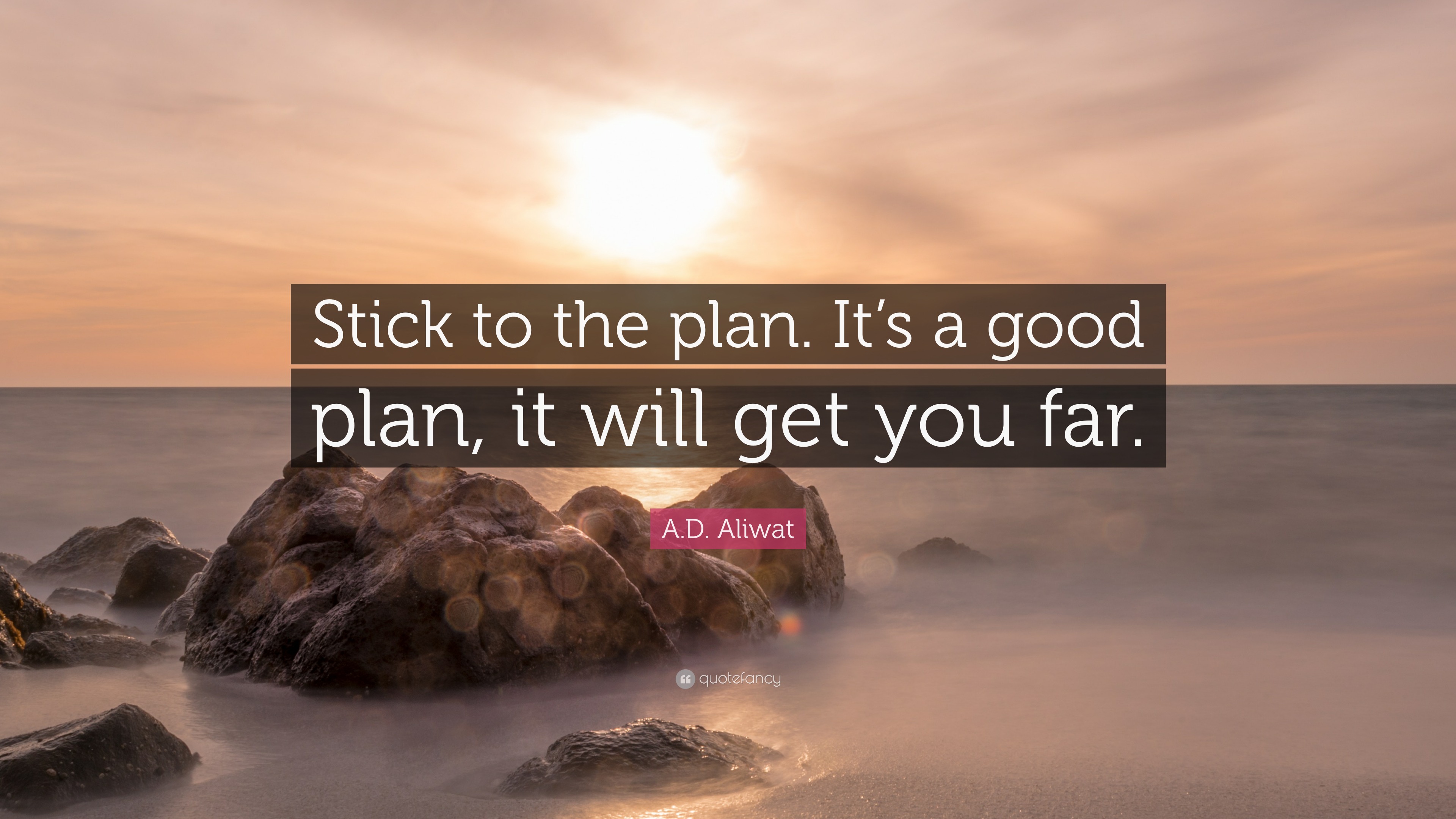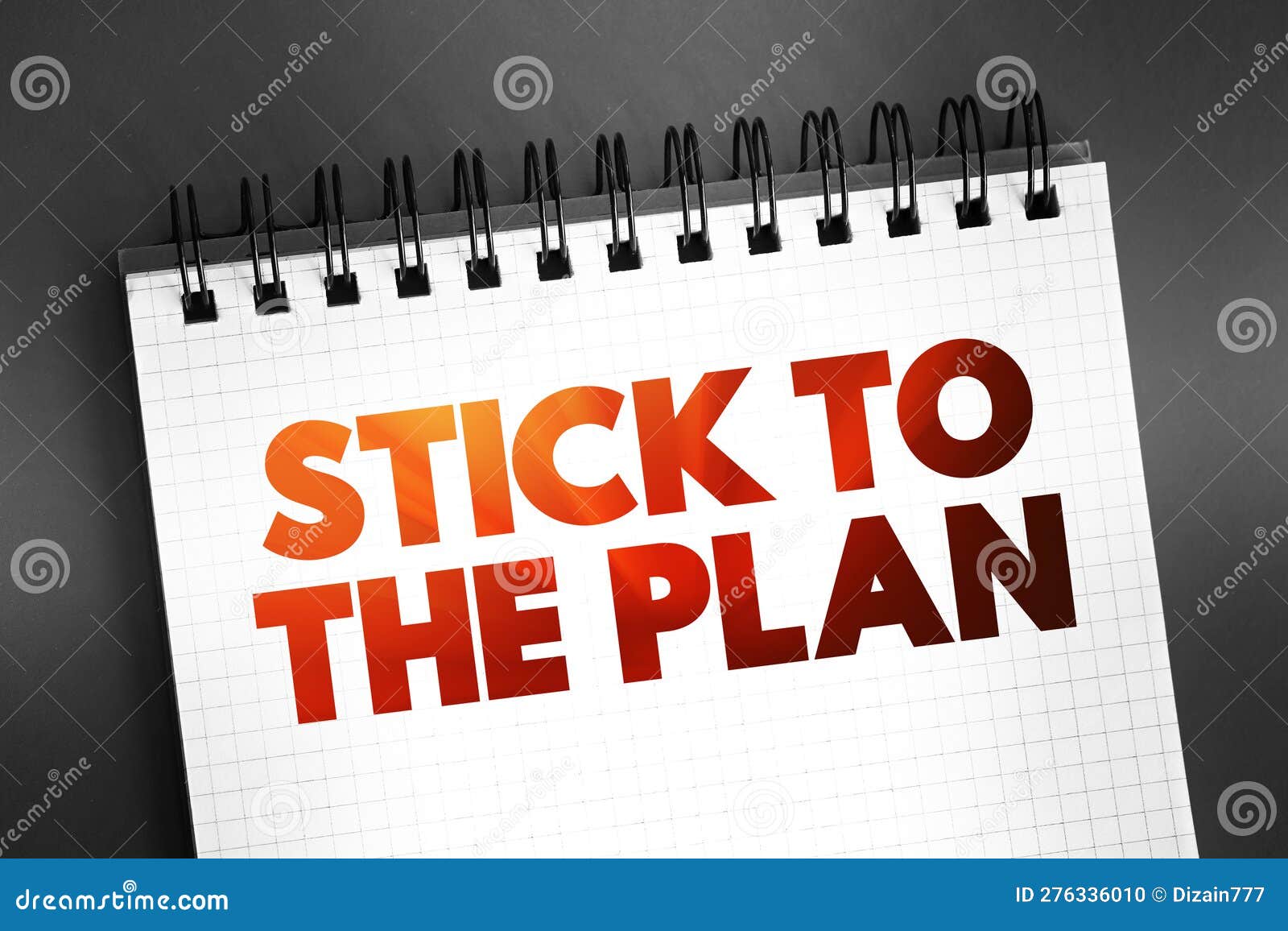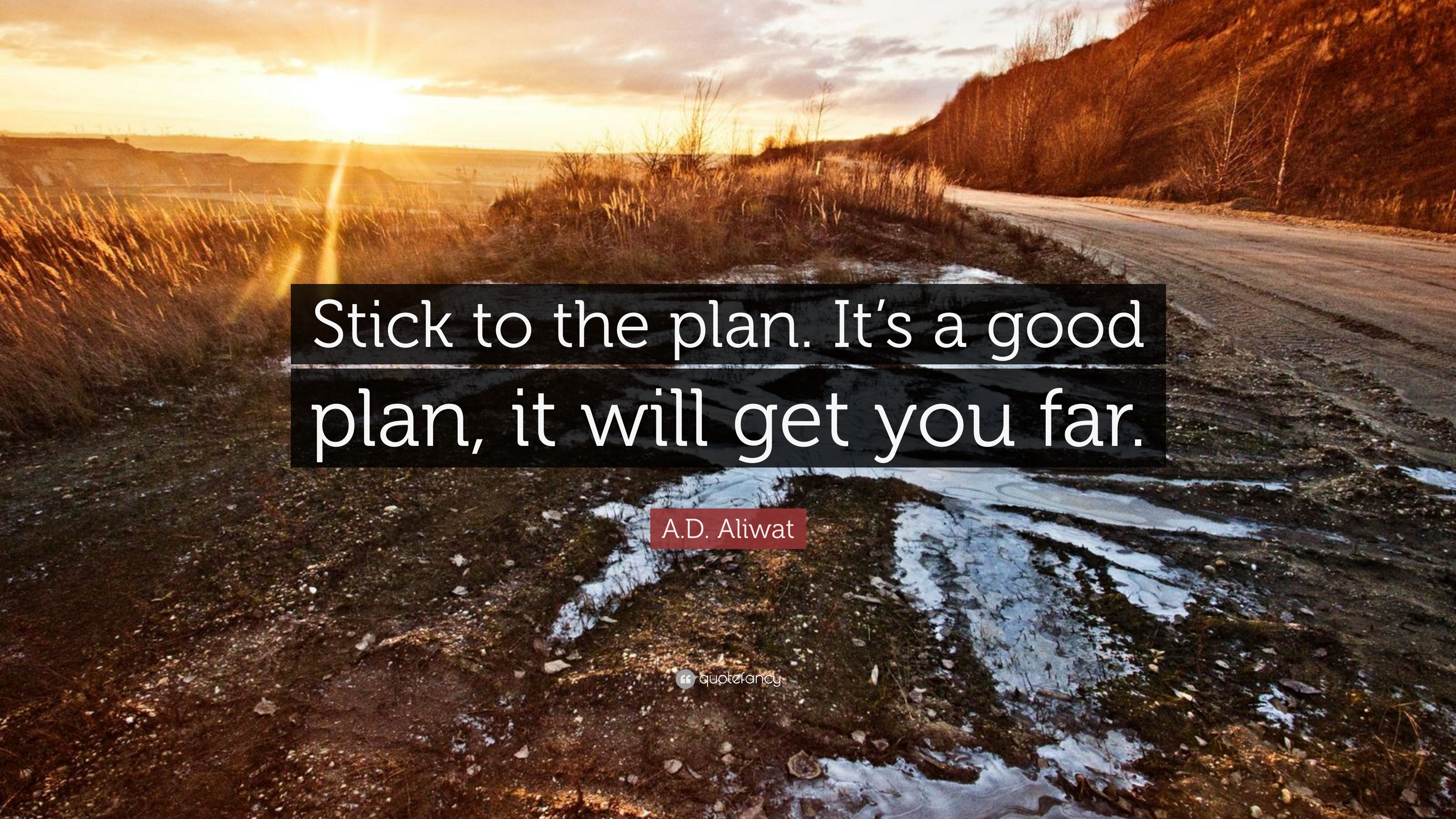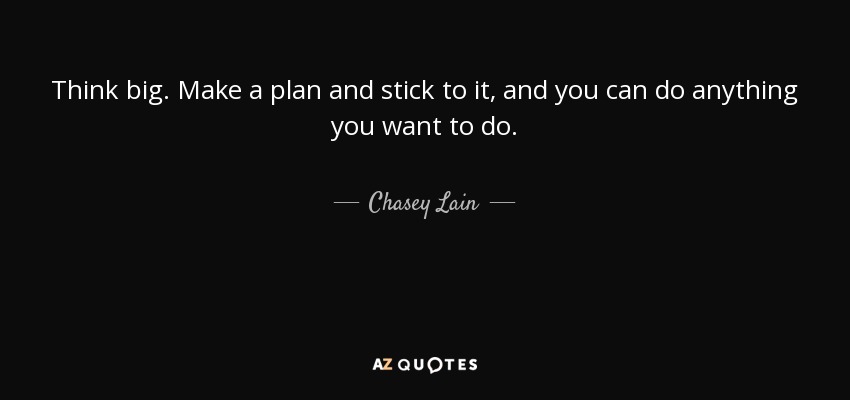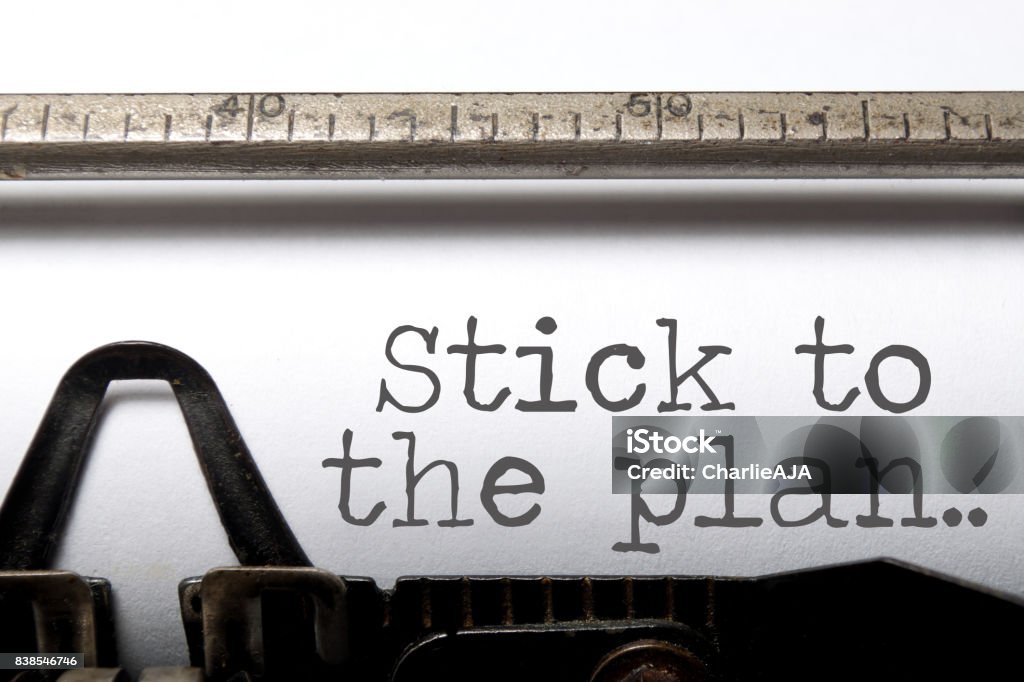Stick To The Plan Or Stick With The Plan

The aroma of freshly brewed coffee mingled with the crisp morning air at the community center. Sunlight streamed through the large windows, illuminating faces etched with determination and a hint of uncertainty. A large banner hung above the room, proclaiming in bold letters: "Project Thrive: Building a Better Tomorrow, Together."
At the heart of the discussion was a crucial question: Should the community stick to the plan, a meticulously crafted roadmap for neighborhood revitalization, or stick with the plan, adapting and modifying it to better address the evolving needs of its residents?
The Genesis of Project Thrive
Project Thrive began two years ago, born from a series of town hall meetings and grassroots initiatives. The initiative sought to tackle issues ranging from unemployment and affordable housing to access to quality education and healthcare.
A Collaborative Effort
Led by Mayor Thompson and a dedicated team of community leaders, the project was ambitious in scope. It combined private investment with public funding, and aimed to stimulate sustainable economic growth within the neighborhood.
The initial plan included building a new community center, establishing job training programs, and renovating dilapidated homes.
The Shifting Landscape
However, as Project Thrive began to unfold, unexpected challenges emerged. A national economic downturn impacted local businesses, and the cost of construction materials soared.
This led to delays and budget constraints, prompting some residents to question the viability of the original plan. Concerns were also raised about the plan's inclusivity, with some arguing that it did not adequately address the needs of all community members.
"We need to ensure that Project Thrive benefits everyone, not just a select few," said Maria Rodriguez, a local activist.
The Debate: Stick To Or Stick With?
The debate over whether to stick to the plan or stick with the plan intensified in recent weeks. Proponents of the original plan argued that it was essential to stay the course, citing the importance of consistency and accountability. They believed that deviating from the roadmap would undermine the project's credibility and jeopardize its long-term success.
On the other hand, those advocating for adaptation emphasized the need for flexibility and responsiveness. They argued that sticking rigidly to the original plan, without considering the changing circumstances, would be detrimental to the community's interests.
Finding Common Ground
Mayor Thompson addressed the concerns in a recent public statement, stressing the importance of finding a balance between adhering to the core principles of the project and adapting to the evolving needs of the community.
“We must be pragmatic and willing to adjust our strategies as needed,” she stated, “while remaining steadfast in our commitment to creating a thriving neighborhood for all.”
Data from the Department of Urban Development suggests that successful revitalization projects often involve a combination of strategic planning and adaptive management.
This approach allows communities to stay true to their overall vision while remaining flexible enough to overcome unforeseen obstacles.
A Path Forward
The community's journey with Project Thrive is far from over. It is a testament to the power of collective action and the resilience of the human spirit. The decision to stick to the plan or stick with the plan is not merely a matter of semantics.
It is about striking a delicate balance between vision and reality, between commitment and adaptability. The answer, it seems, lies not in choosing one over the other, but in embracing both.
As the community moves forward, it is clear that the true measure of Project Thrive's success will be its ability to create a brighter future for all, one that is both rooted in the original vision and responsive to the evolving needs of its residents.

